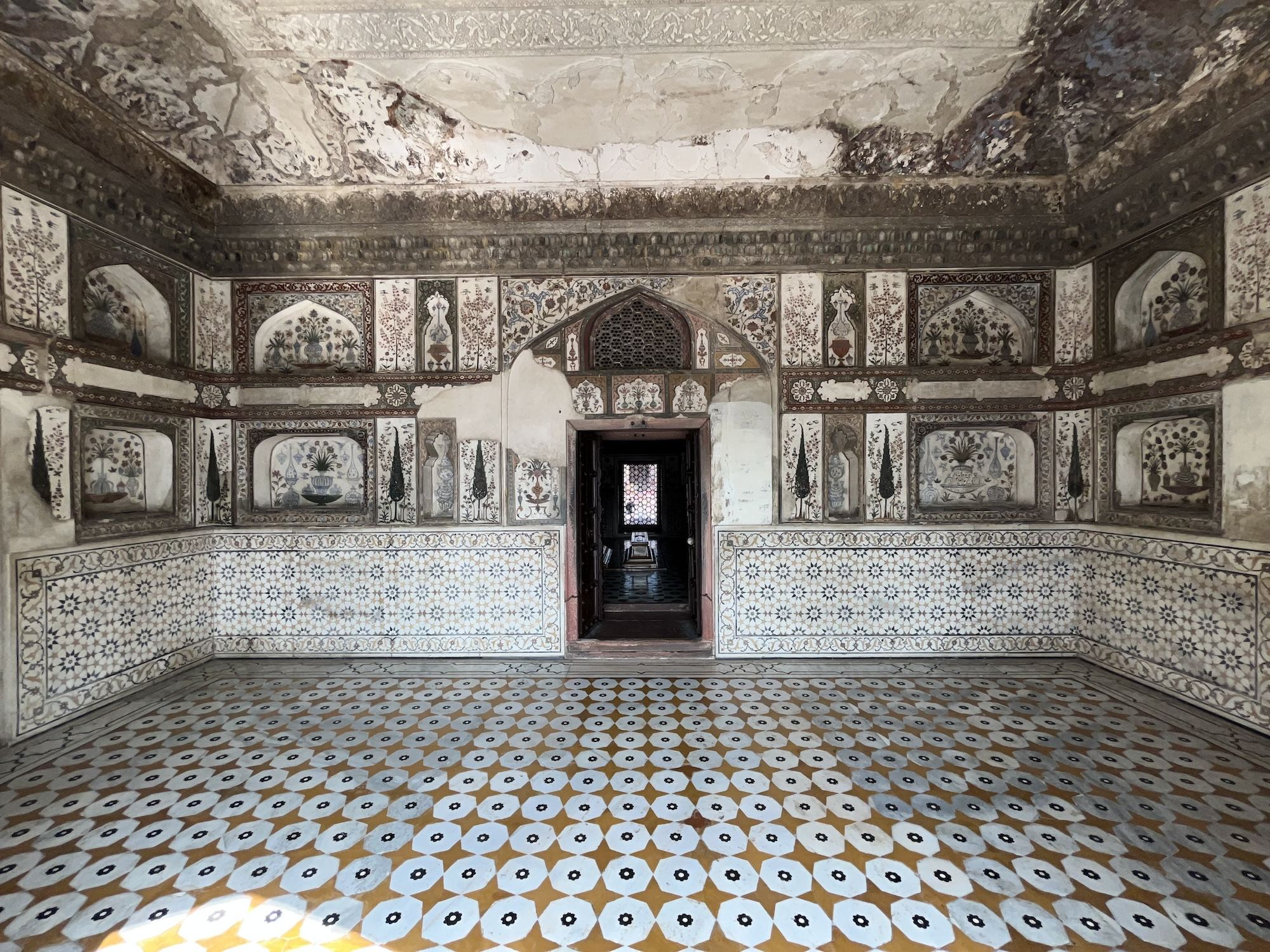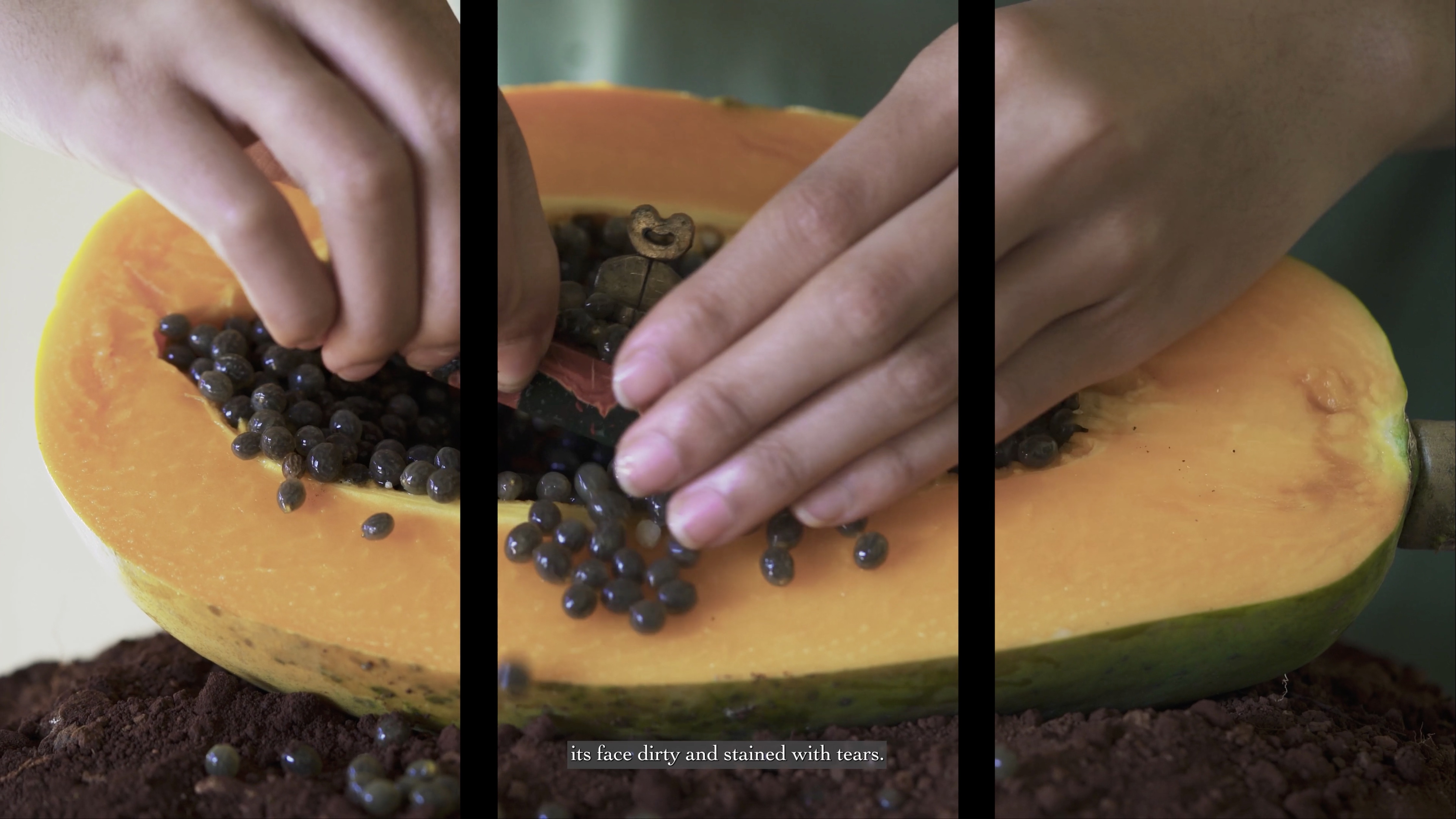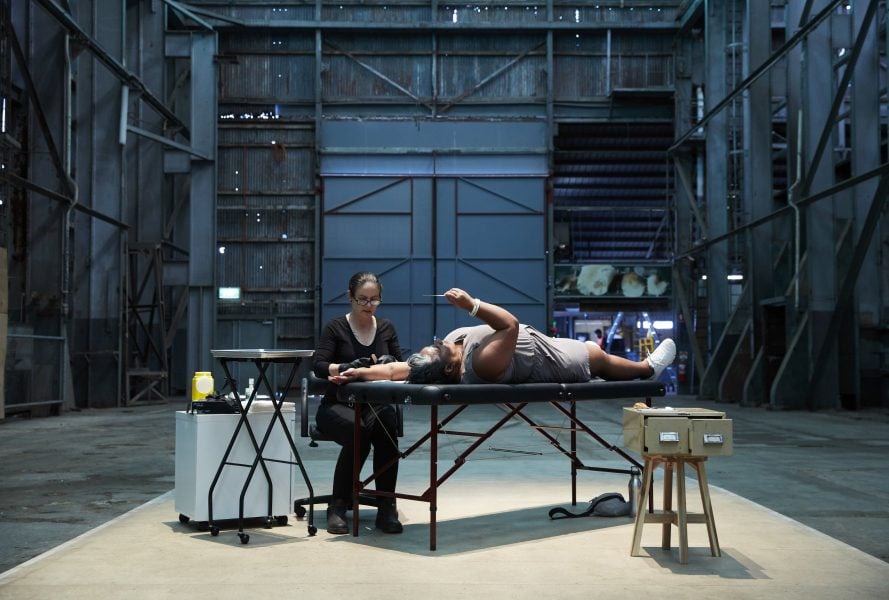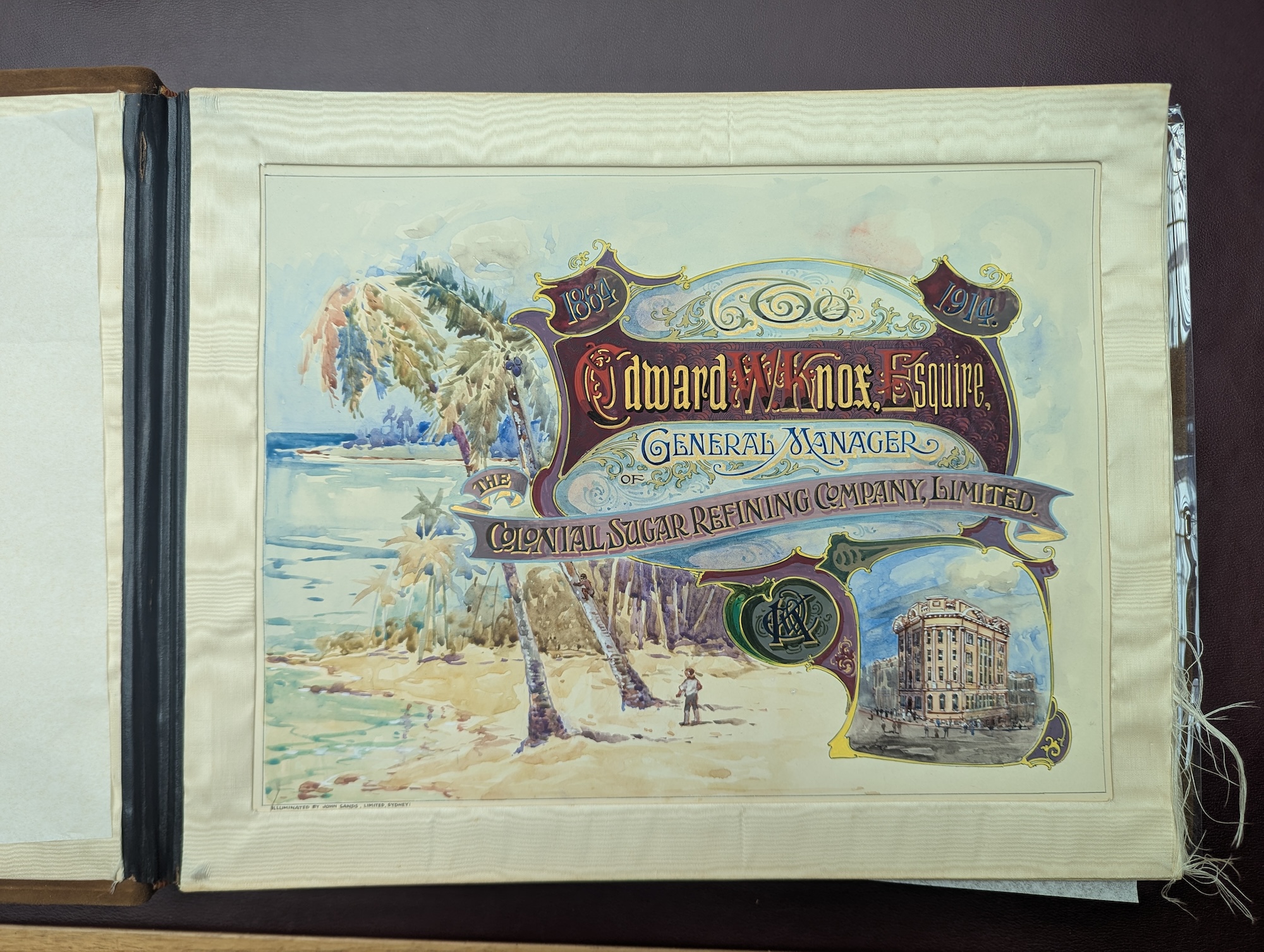Mughal architecture and picture postcards

Presentations by two Art History PhD candidates on their current research.
Interior of the tomb of Itimad ud Daulah, 1622-28, Agra, India. Photograph by Miranda Luo.
Miranda Luo, Real and imaginary objects at the Itimad ud Daulah: Mughal collecting practices and dynastic self-representation
The chinikhana (porcelain house) emerged in the Timurid context (r.1370-1507) as an in-built space with arched niches designed to display precious objects such as Chinese porcelain. In the Mughal context (r. 1526-1857), it also became a decorative motif on architectural surfaces.
Featuring over 100 fresco paintings of mostly blue and white objects within physical niches, the tomb of the Itimad ud Daulah in Agra is one of the most extensively decorated chinikhanas of Mughal architecture. Past scholarship has viewed these painted objects as symbolic allusions to the luxurious vessels of Paradise as described in the Qur’an.
Expanding on this interpretation, this paper evaluates the chinikhana as a materialisation of Mughal collecting aspirations and more significantly, a curated display of Mughal sovereignty. While these frescoes reflect the circulation of objects like Chinese celadon plates and meiping vases in the Indian Ocean world, many of the blue and white objects are fictive. Alongside an examination of wider Mughal collecting practices, I explore how the Mughal representation and ownership of both real and imaginary objects in funerary architecture contributed to a broader project of dynastic self-representation.
Jennifer Yang, Disseminating Empire: Encounters with a picture postcard in the colonial port city
As part of a larger project examining the circulation of colourised photographs in colonial port cities across Southeast Asia, this paper concentrates on a collection of picture postcards distributed by publishers across London, Rangoon, and Batavia between the 1900s and 1920s. Central to the analysis are the tactics of facsimile employed to produce the postcard: consider Tuck & Son’s painted versions of photographic portraits sold at the 1924 British Empire Exhibition, the Punjabi publisher D.A. Ahuja’s illicit reprints of the stock of European photographers in Burma, and the Chinese-owned firm Tio Tek Hong’s colourised appropriations of Batavia-based firm Woodbury & Page’s albumen photographs.
Is it possible to read these picture postcards as objects of inflexion, accounting for the influence they wielded over spaces of the everyday? What counter-narratives may be revealed when reading such objects for the anachronisms which arise within reprints and colourisations?
This paper argues not only for renewed focus on vernacular photographic objects produced outside of Europe and North America but considers what methodological approaches must be developed to study them. In examining these painted picture postcards as the fragmented remains of a large and scattered archive, the paper proposes new theorisations of the relation between the photographic image and colour, and the aesthetic and political possibilities encoded within the substrate of the postcard or photograph as object.
Part of the Art History Seminar Series, convened by Mary Roberts, and presented by the discipline of art history at the University of Sydney, with support from the Power Institute.
Join via Zoom
People
Miranda Luo
Miranda Luo is a PhD candidate, lecturer, and research assistant in the Department of Art History at the University of Sydney. She completed her Honours in Art History 2021 and her research interests include Persianate manuscript cultures, early modern cultural exchange, and digital methods in art history. Her PhD focuses on the interplay between architecture and portable objects by examining the chinikhana (porcelain house) in 17th century Mughal India in relation to connoisseurship, mobility, and monumentality.
Jennifer Yang
Jennifer Yang is a PhD candidate in Art History at the University of Sydney researching the (re)production and circulation of painted photographs across British and Dutch occupied Southeast Asia. Her writing has been published in journals including Southeast of Now and Trans Asia Photography as well as Australian and international arts publications including Asia Art Archive’s Like a Fever, Art Asia Pacific, and Artguide. Jennifer has also curated exhibitions which include Our Grandfather Road (2022) at 16 albermarle project space, Sydney and Everything We Inherit (2024) at ISA Art Gallery, Jakarta.



